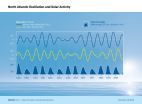Women now make up half of all U.S. medical school graduates. However, sex disparities in senior faculty rank persist in academic medicine. Whether differences in age, experience, specialty, and research productivity between sexes explain persistent disparities in faculty rank has not been studied. Anupam B. Jena, M.D., Ph.D., of Harvard Medical School, Boston, and colleagues analyzed sex differences in faculty rank using a comprehensive database of U.S. physicians with medical school faculty appointments in 2014 (91,073 physicians; 9.1 percent of all U.S. physicians), linked to information on physician sex, age, years since residency, specialty, publications, National Institutes of Health (NIH) funding, and clinical trial investigation.
In all, there were 30,464 women who were medical faculty vs 60,609 men. Of those, 11.9 percent of women vs 28.6 percent of men had full-professor appointments. Women faculty were younger and disproportionately represented in internal medicine and pediatrics. The average total number of publications for women was 11.6 vs 24.8 for men; the average first- or last-author publications for women was 5.9 vs 13.7 for men.
Among 9.1 percent of medical faculty with an NIH grant, 6.8 percent were women and 10.3 percent were men. In all, 6.4 percent of women vs 8.8 percent of men had a trial registered on ClinicalTrials.gov. After adjustment for age, years since residency, specialty, and measures of research productivity, men were still significantly more likely than women to have achieved full-professor status. Sex differences in full professorship were present across nearly all specialties and were consistent across medical schools with highly and less highly ranked research programs.
The researchers also found that women were less likely than men to hold the rank of associate or full professor (a combined outcome) than to hold the rank of assistant professor and that women were less likely to hold the rank of full professor than hold the rank of associate professor.
The authors write that women may face difficulties finding effective mentors and receiving recognition from senior colleagues, workplace discrimination, and inequitable allocation of institutional resources. "These challenges may adversely affect research productivity and may also explain why even after adjusting for research productivity, women are still less likely than men to be full professors." (doi:10.1001/jama.2015.10803; Available pre-embargo to the media at http:/media.jamanetwork.com)
Editor's Note: The authors report a funding grant from the Office of the Director, National Institutes of Health. All authors have completed and submitted the ICMJE Form for Disclosure of Potential Conflicts of Interest and none were reported.
In another study, Robert Sege, M.D., Ph.D., of Health Resources in Action, Boston, and colleagues examined sex differences in institutional support for junior biomedical researchers.
Women are underrepresented in the biomedical research workforce. Only 30 percent of funded investigators are women. Junior faculty women have fewer peer-reviewed publications than men and are more often on clinician-educator (vs traditional research) tracks. One reason may be differences in early-career institutional support, according to background information in the article.
Application data from two New England biomedical research programs administered by the Medical Foundation Division of Health Resources in Action were analyzed. Data on start-up support provided by the employing institution (i.e., salary and other support, including research technicians, equipment, and supplies) from all applications during 2012-2014 were extracted. The researchers compared support for men and women overall, and by scientific focus and terminal degree.
The study included 219 applicants (127 men and 92 women). Most applicants (67 percent) held Ph.D. degrees. Women were in clinical research more frequently than men. There were no differences between men and women in terminal degree or years since receiving terminal degree. Overall, men reported significantly higher start-up support (median, $889,000) than women (median, $350,000); 51 men (40 percent) and 11 women (12 percent) reported support of more than $1 million.
Men had higher support regardless of degree, but the difference was statistically significant only for persons with Ph.D. degrees. In basic sciences, men reported significantly more start-up support than women. Experience (years since receiving terminal degree) did not correlate with start-up package size for men, women, or overall.
"In this preliminary study of early-career grant applicants administered by 1 organization, junior faculty women received significantly less start-up support from their institutions than men," the authors write. "This first look suggests the need for systematic study of sex differences in institutional support and the relationship to career trajectories." (doi:10.1001/jama.2015.8517; Available pre-embargo to the media at http:/media.jamanetwork.com)
Editor's Note: The Medical Foundation Division of Health Resources in Action provided access to the administrative data. The authors have completed and submitted the ICMJE Form for Disclosure of Potential Conflicts of Interest and none were reported.
To contact Robert Sege, M.D., Ph.D., call David Ball at 617-243-9950 or email david@ballcg.com.
Editorial: Addressing Disparities in Academic Medicine
"These 2 articles add to the abundance of literature focusing on the disparities of careers of women in academic medicine. Importantly, similar disparities exist for individuals from racial and ethnic minorities and for those from other marginalized communities," write Carrie L. Byington, M.D., and Vivian Lee, M.D., Ph.D., M.B.A., of the University of Utah, Salt Lake City, in an accompanying editorial.
"As the training ground for future generations of health care providers and biomedical scientists, academic medical centers should ensure that their students, faculty, and staff represent the people they serve and that all can contribute to their fullest potential. It is time for academic medicine to move forward." (doi:10.1001/jama.2015.10664; Available pre-embargo to the media at http:/media.jamanetwork.com)
Editor's Note: All authors have completed and submitted the ICMJE Form for Disclosure of Potential Conflicts of Interest and none were reported.
To contact editorial co-author Carrie L. Byington, M.D., call Julie Kiefer at 801-587-1293 or email julie.kiefer@utah.edu.
INFORMATION:


